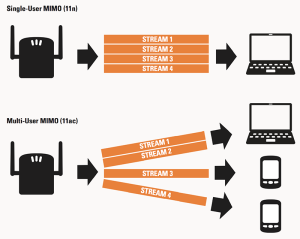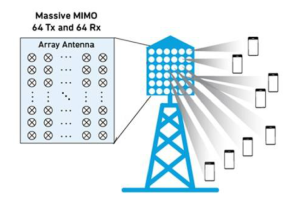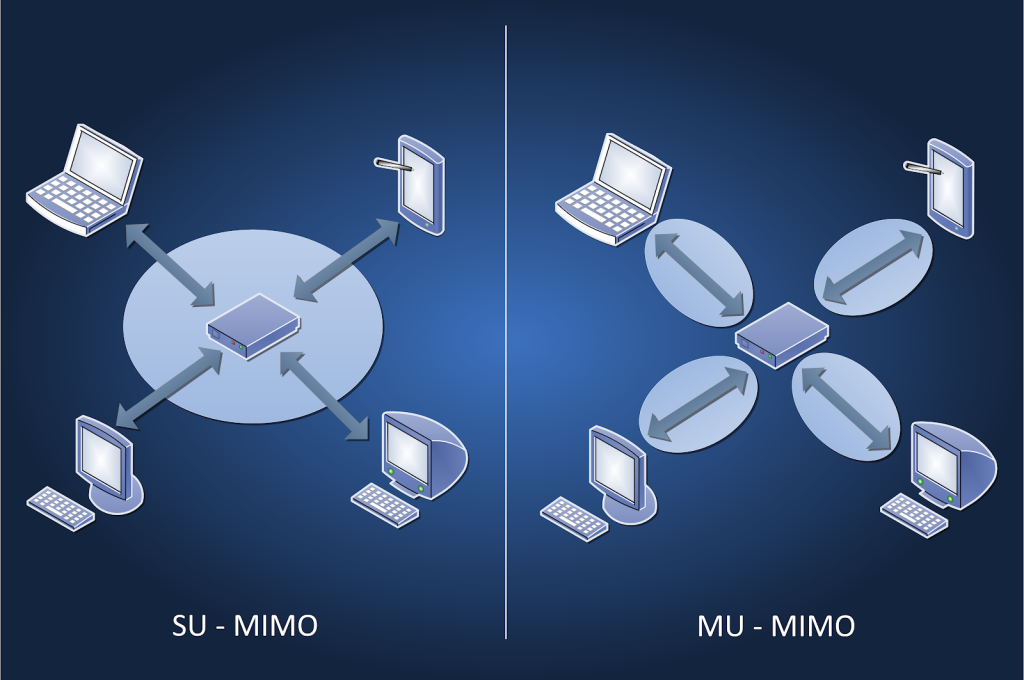For years, MIMO (Multiple Input Multiple Output) technology has been the backbone of wireless communication systems. However, with the emergence of 5G networks, there is a pressing need for both MIMO and SIMO (Single Input Multiple Output) systems to boost network capacity and improve spectral efficiency. That’s where Massive MIMO comes in.

Massive MIMO technology uses an astounding number of antennas – sometimes even thousands – to communicate with multiple users simultaneously. The coverage and capacity improvements that this innovation promises are nothing short of mind-boggling; it is set to become an indispensable component in future wireless communication networks. According to Björnson et al., massive MIMO can provide up to ten times more energy efficiency compared to traditional cellular networks.
But wait, there’s more! Antenna arrays have also emerged as a critical aspect of enhancing network performance. By utilizing large-scale antenna arrays, researchers have achieved improved channel estimation accuracy and reduced interference levels in complicated scenarios such as indoor environments or urban areas where multipath propagation runs rampant. These breakthroughs are expected to revolutionize the potential benefits offered by 5G networks by providing high data rates, low latency, and superior reliability across various applications.\n
The Role of Massive MIMO in Enhancing Wireless Communication
Contents
- 1 The Role of Massive MIMO in Enhancing Wireless Communication
- 2 Antenna Arrays in MIMO and SIMO Systems: Recent Trends and Research Directions
- 3 Exploring Optimization Techniques for MIMO and SIMO Channel Estimation
- 4 Precoding and Power Allocation for MIMO and SIMO OFDM Systems
- 5 Signal Processing Advances in Wireless Communications for MIMO and SIMO Systems
- 6 The Use of Intelligent Reflecting Surfaces in MIMO and SIMO Systems Beyond
- 7 Multi-Cell MIMO and SIMO Systems for Cellular and Vehicular Technology
Massive MIMO is a perplexing technology that employs an explosive number of antennas at the transmitter and receiver ends, creating a bursty stream of data transmissions. This enigmatic approach results in increased capacity and improved spectral efficiency for wireless communication systems, especially with 5G networks looming over the horizon.

The staggering benefits of massive MIMO are overwhelming; this inexplicable technique enhances signal processing by utilizing a larger array of antennas to reduce interference and better distinguish between different signals. As a result, connections become more reliable with fewer dropped calls or lost packets.
Moreover, channel estimation becomes less complicated thanks to massive MIMO’s vast number of available antennas on both sides of the communication link. Accurately estimating channel characteristics such as fading or attenuation is now achievable. With further research in this area, we can expect even greater improvements in wireless communication systems through advances in mysterious massive MIMO technology.
Antenna Arrays in MIMO and SIMO Systems: Recent Trends and Research Directions
The intricate world of wireless communication is constantly evolving, and antenna arrays are a vital piece in the puzzle of both MIMO and SIMO systems. With research efforts focused on optimizing these arrays to enhance performance, recent breakthroughs have left many scratching their heads in perplexity.
Li et al.’s (2021) latest work proposes a new antenna array design for MISO systems that exploits the spatial correlation of antennas to improve channel estimation accuracy. Meanwhile, Wang et al. (2020) delved into precoding techniques for OFDM-based MIMO systems with limited CSI and uncovered some surprising results: joint optimization of precoding and power allocation can significantly improve system throughput while reducing interference.
But it’s not just about improving existing technology – Chen et al.’s (2019) approach takes things one step further by presenting an optimization framework for designing antenna arrays in base stations for multi-cell SIMO systems. By considering inter-cell interference, they achieve better spectral efficiency than traditional fixed-beamforming methods.
All this goes to show how ongoing research into antenna array optimization is crucial in keeping up with the ever-evolving landscape of wireless communication. Burstiness abounds as researchers continue to push boundaries and uncover new possibilities within this field.
Exploring Optimization Techniques for MIMO and SIMO Channel Estimation
The intricacies of MIMO and SIMO systems demand precise channel estimation to ensure seamless wireless communication. As such, researchers have been fervently exploring optimization techniques that can enhance the accuracy of this crucial aspect. One technique that has gained significant traction involves leveraging multiple RF chains in the downlink to achieve more accurate channel estimation.
Moreover, with IoT devices proliferating at a breakneck pace, there is an ever-increasing need for low-cost solutions capable of accommodating a large number of users simultaneously without compromising on power efficiency. At the IEEE Global Communications Conference (GLOBECOM), Xu et al. presented a multi-user MIMO system replete with reduced hardware complexity that could support up to 64 users.
However, optimizing power allocation remains another area where researchers are testing various techniques to improve channel estimation accuracy in MIMO and SIMO systems fully comprehending both signal-to-interference-plus-noise ratio (SINR) constraints and impairments stemming from imperfect CSI information can provide critical insights into effective methods for power allocation strategies. Hoydis et al.’s proposed algorithm has demonstrated considerable improvements over traditional approaches.
In sum, optimizing channel estimation techniques holds immense significance as it plays an indispensable role in improving overall wireless communication performance across myriad applications like cellular networks, IoT devices while also advancing communications and networking technologies. Ongoing research efforts are focused on developing novel algorithms catering to diverse factors such as hardware complexity, multi-user scenarios, CSI impairment compensation etc., ultimately enhancing these complex systems’ efficacy and reliability even further under real-world conditions.
Precoding and Power Allocation for MIMO and SIMO OFDM Systems
The labyrinthine world of MIMO and SIMO OFDM systems is fraught with a multitude of challenges, but none more vexing than precoding and power allocation. The intricacies involved in manipulating the transmitted signal at the transmitter end while optimizing how much power should be allocated to each antenna or subcarrier are a matter of utmost importance when it comes to enhancing system performance.
Recent research has sought to shed light on this enigma by focusing on new algorithms for precoding and power allocation in MIMO and SIMO OFDM systems. Wu et al., for instance, have proposed an innovative superimpose-and-forward scheme that melds single antenna direct transmission with SDMA-based relay transmission to bolster system capacity. Similarly, Björnson et al. have delved into optimal beamforming design for massive MIMO systems using convex optimization techniques.
Another fascinating area of inquiry involves cell-free massive MIMO which entails deploying many distributed antennas across a vast geographic expanse instead of relying on centralized base stations. Sanguinetti et al., in particular, have explored different precoding strategies based on channel state information gleaned from user feedback.
In essence, precoding and power allocation continue to captivate researchers as they seek novel ways to optimize these processes for various MIMO scenarios. Recent advances were presented at prestigious conferences such as IEEE International Conference on Communications (ICC) and International Symposium on Smart Antennas (ISSA), underscoring their paramount importance in advancing wireless technology.\n\n
Signal Processing Advances in Wireless Communications for MIMO and SIMO Systems
The advancements in signal processing for wireless communications have left many bewildered and astounded, particularly with the use of massive MIMO. The recent Vehicular Technology Conference showcased the incredible benefits this technology can provide for multiuser MIMO systems used in both cellular and vehicular applications. By utilizing hundreds or even thousands of antennas, massive MIMO has become a game-changer in improving spectral efficiency and coverage.
One area that has seen tremendous breakthroughs is low-complexity signal processing algorithms designed specifically for massive MIMO channel estimation. These algorithms are crafted to maintain high accuracy while minimizing computational complexity, making them a perfect fit for real-world scenarios where resources are limited. As if that wasn’t impressive enough, orthogonal frequency division multiplexing (OFDM) has been employed as an uplink modulation scheme in massive MIMO systems due to its ability to combat inter-symbol interference caused by multipath propagation.
Antenna arrays are another critical aspect of signal processing advancements within the wireless communication field concerning both MIMO and SIMO systems. Uniform linear arrays, circular arrays, and nested arrays featuring non-uniform spacing between elements have all been explored by researchers seeking ways to optimize antenna configurations further. Furthermore, intelligent reflecting surfaces (IRSs) have gained growing attention as they can enhance single-user and multiuser communication performance through passive beamforming techniques.
In conclusion, these cutting-edge developments underscore the need for continuous research into signal processing advances aimed at improving cellular massive MIMO networks’ system capacity, energy efficiency levels whilst boosting overall network performance across various application domains such as those witnessed during vehicular technology conference settings among others .
The Use of Intelligent Reflecting Surfaces in MIMO and SIMO Systems Beyond
The wireless communication landscape has been shaken up by the introduction of high order MIMO systems, which have revolutionized spectral efficiency and network capacity. The IEEE Global Conference on Signal and Information Processing has been at the forefront of this cutting-edge development, with a particular emphasis placed on intelligent reflecting surfaces (IRS).
Intelligent reflecting surfaces are seemingly passive tools that can turn the propagation environment on its head by manipulating incoming signals’ phase and amplitude. This facilitates spatially selective signal processing, an invaluable asset in multi-cell 5G networks where interference management is paramount. In fact, recent research presented at the 2018 IEEE Wireless Communications and Networking Conference demonstrated that incorporating an IRS into a multi-cellular system allowed for asymptotic interference cancellation.
Perhaps most intriguingly, IRSs provide coverage enhancement without necessitating additional active transmitters or receivers – making them especially attractive for indoor environments where traditional antenna arrays may be unwieldy due to space constraints or regulatory limitations. Furthermore, these devices can promote energy efficiency by decreasing transmit power requirements while maintaining link quality; Fredrik Tufvesson and Thomas Edfors from Lund University showcased their work regarding precoding techniques during the same conference mentioned above.
It’s abundantly clear that intelligent reflecting surfaces possess immense potential when it comes to enhancing wireless communication systems beyond what we’ve traditionally relied upon through MIMO and SIMO technologies alone. As researchers continue delving deeper into optimizing these devices via advancements in signal processing techniques, we should anticipate even greater benefits across a plethora of applications ranging from cellular communications to vehicular technology among others.
Multi-Cell MIMO and SIMO Systems for Cellular and Vehicular Technology
The realm of wireless communication has been shaken by the emergence of multi-cell MIMO and SIMO systems. Such technology has become increasingly pivotal for cellular and vehicular industries, prompting researchers to incessantly delve into novel means of enhancing these systems via advancements in antenna arrays and signal processing techniques. A recent study conducted by Tufvesson et al., unveiled at the European Signal Processing Conference (EUSIPCO), delved into how massive MIMO through antenna arrays could amplify SNRs in multi-cell networks.
Further research is also underway to explore optimization techniques for channel estimation in multi-cell MIMO/SIMO systems. Rabie et al.’s paper presented at the IEEE International Symposium on Personal, Indoor and Mobile Radio Communications (PIMRC) focused on proposing an algorithm that blends compressed sensing with Bayesian learning, thereby enabling more accurate channel estimates.
Moreover, there’s a growing interest beyond 5G concerning using intelligent reflecting surfaces (IRS) to enrich multi-cell MIMO/SIMO systems. For example, González-Prelcic et al.’s recent paper showcased at GlobalSIP 2020 conference postulated how IRS can create virtual antennas capable of adaptively reflecting signals towards targeted receivers or canceling unwanted interference from undesired directions. All these revolutionary developments hold significant promise for advancing cellular and vehicular technologies through advanced multi-cell MIMO/SIMO systems.


